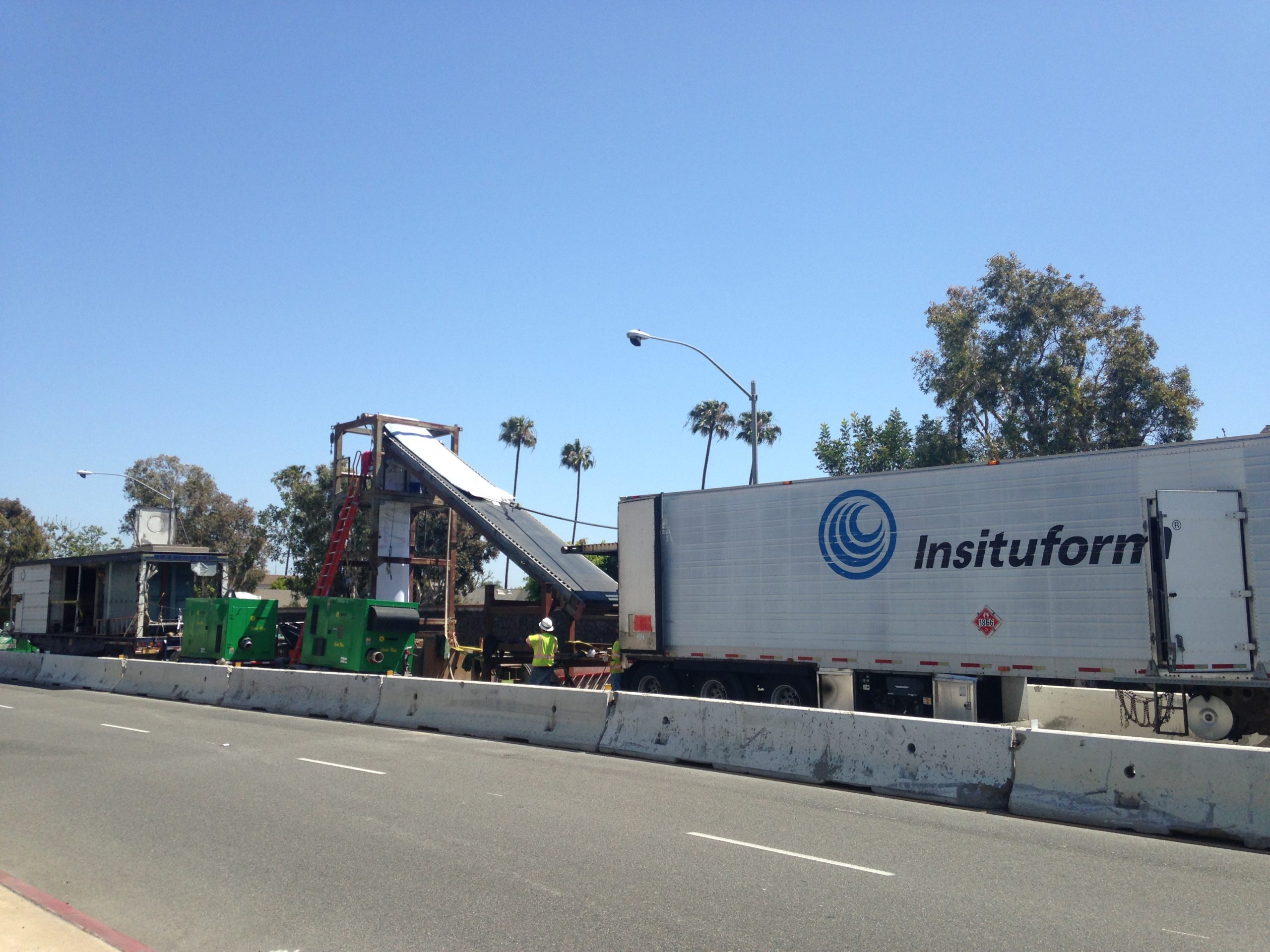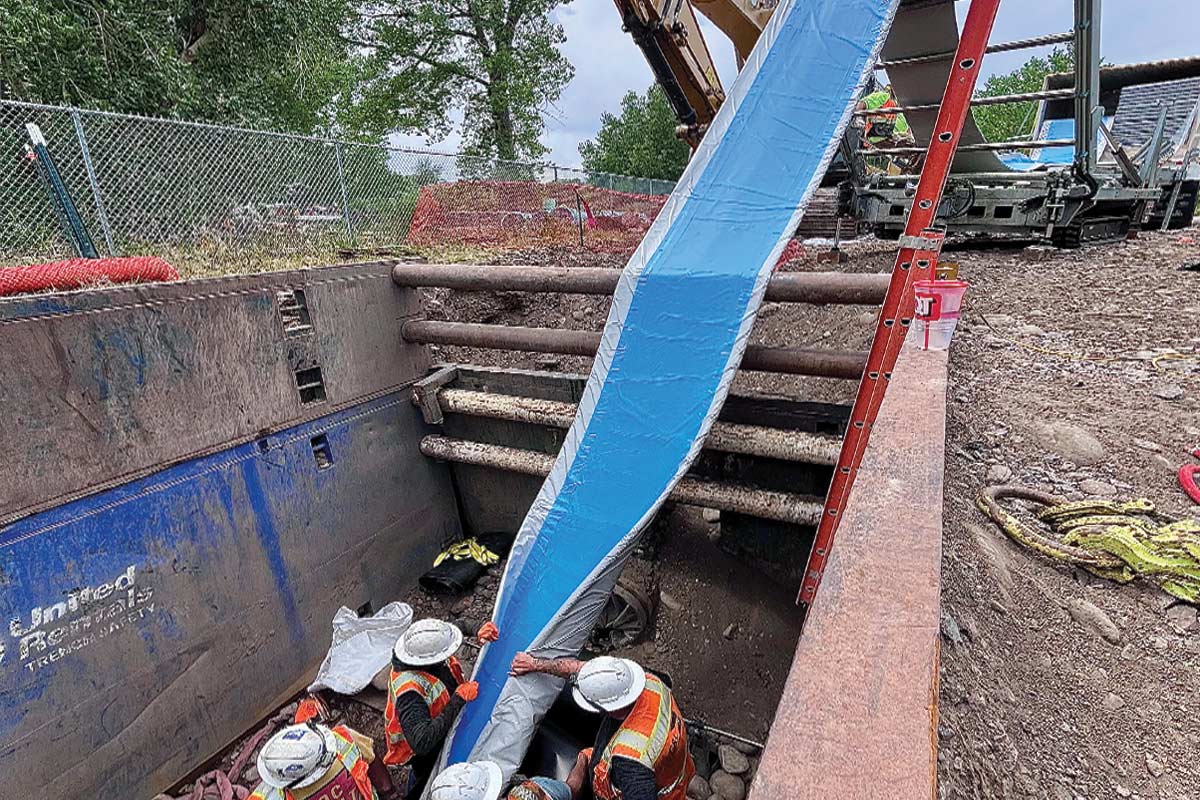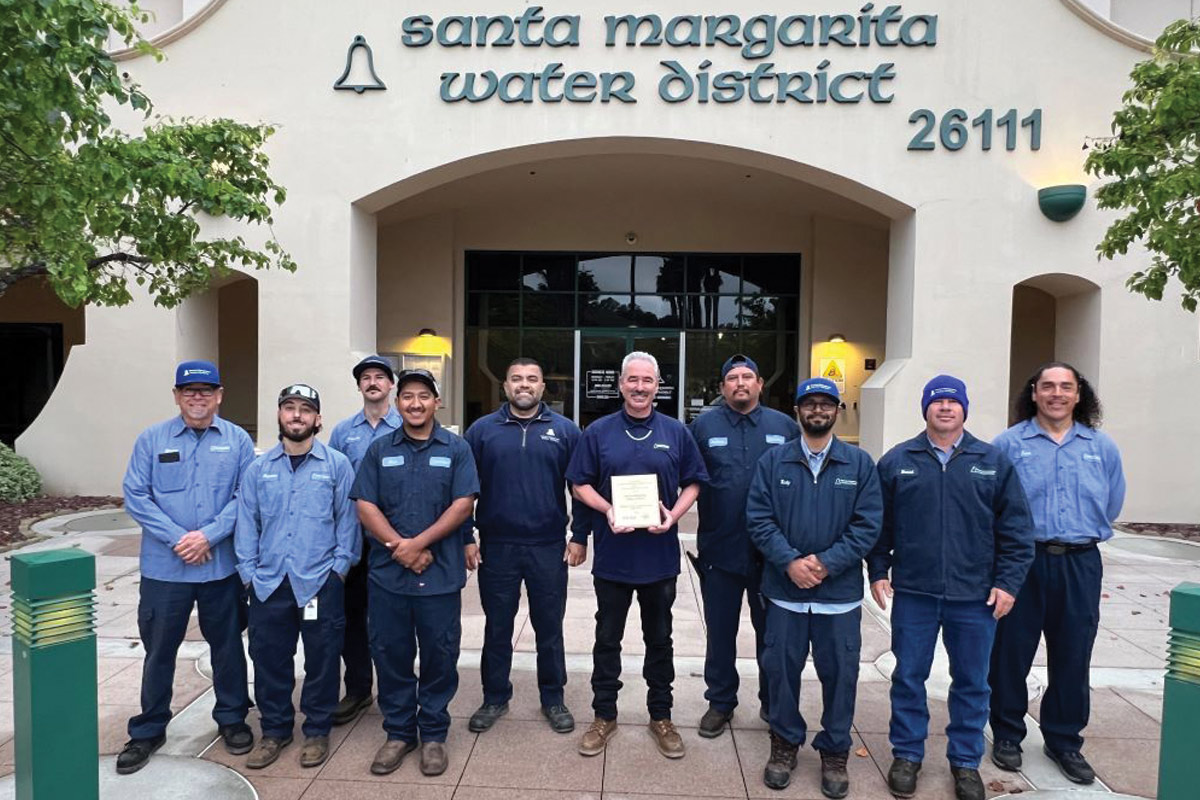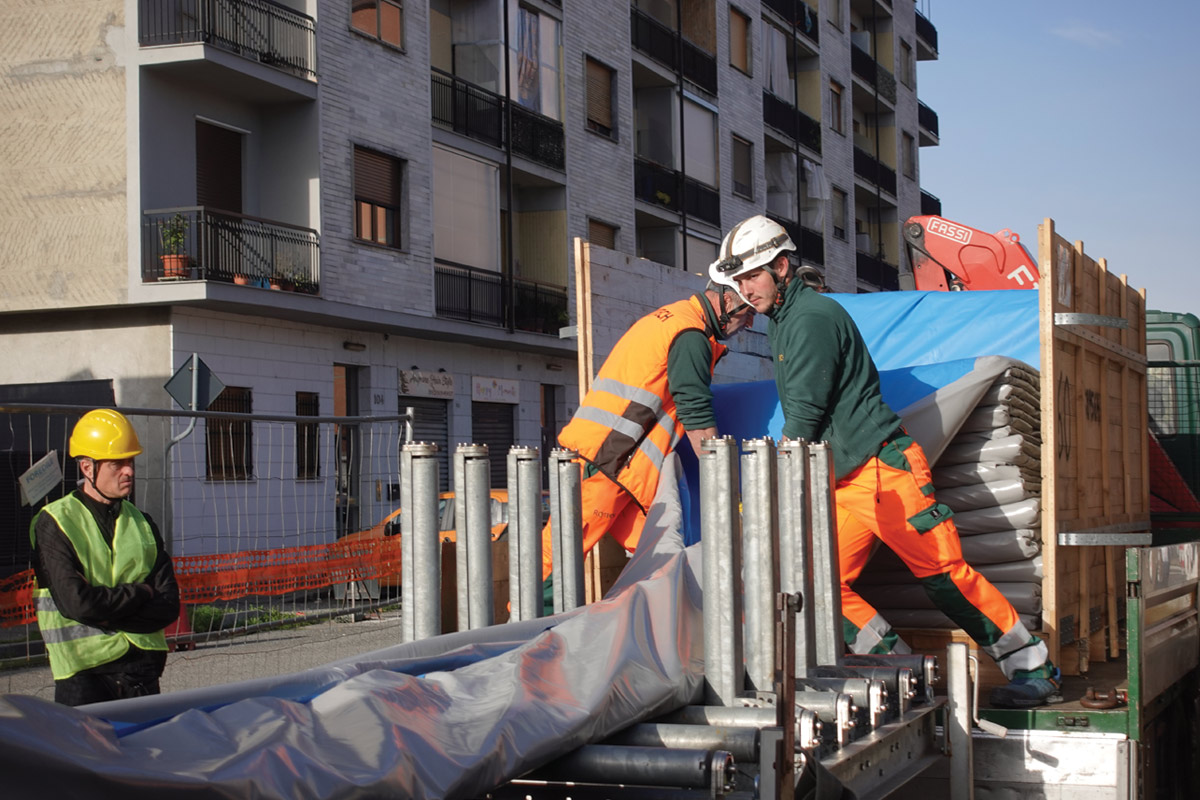
Insituform RPP Used to Rehab Daytona Beach Pressure Pipe
October 16, 2015

Insituform RPP (Reinforced Pressure Pipe) combines traditional cured-in-place pipe with specially woven fiberglass material to provide added strength and adequate pressure for the line.
While traditional cured-in-place pipe (CIPP) for gravity pipeline systems has been around for 40-plus years, reinforced CIPP for pressurized force mains and potable water applications is still relatively new.
Today, Insituform Technologies, LLC is working to develop better technologies for pressurized systems. The company is also tackling tougher projects. One such project on a lift station and pipelines in Daytona Beach, Fla., presented a variety of challenges in high profile areas.
Project Background
The 30-in pre-stressed concrete cylinder pipeline (PCCP), originally a raw water transmission system that had been taken out of service decades ago, was being converted to a sanitary sewer force main. Project design and inspection for the City of Daytona Beach project was performed by the engineering firm McKim & Creed. After a public bid offering, a fiber-reinforced CIPP rehabilitation system was approved for the project. Known commercially as Insituform RPP (reinforced pressure pipe), the system is a reinforced pressure pipe liner and vinyl ester resin system that combines traditional CIPP with specially-needled fiberglass material to provide added tensile strength and adequate internal pressure resistance for pipeline performance.
As the general contractor for the project, Insituform was not only responsible for CIPP lining, but also for project management and onsite field management for all subcontractors. These subcontractors performed various duties such as CCTV, cleaning, jack and bore, installation of new ductile iron pipe and fittings, and excavation and concrete repair work.

The fiber-reinforced CIPP rehabilitation portion was the second component, of three, with approximately 8,400 ft of 30-in. prestressed concrete cylinder pipe (PCCP) rehabilitated using the Insituform RPP product.
Location
Working in Daytona Beach presented several challenges, as long portions of the job were within the front parking lot of the world’s most famous motor racetrack — the Daytona International Speedway — home of the Daytona 500 on Speedway Boulevard (Florida Highway 92).
There were numerous considerations working in such a well-known, high-profile area. The project spanned from late the fourth quarter of 2014 to the second quarter of 2015. Working around holidays and many Speedway events such as Daytona Bike Week and Daytona 500 events presented special challenges. These events dominated the city and presented unique logistical challenges — such as finding hotel lodging and places for crew members to eat.
The project extended from golf course access on the western end through commercial business areas, passing through the Speedway and terminating on Daytona Beach airport property at the eastern boundary.
Project Overview
The project consisted of three separate bids. Within project A, renovations and improvements were made to the lift station pumping sewage to the line. The second component, or part B, rehabilitated approximately 8,400 ft of 30-in. PCCP rehabilitated using the fiber-reinforced CIPP RPP product. The third and final portion of the project consisted of direct bury of a new ductile iron pipe (DIP) west of the CIPP lining termination point.
To access the jobsite, Insituform crews had to set up the project from a utility easement between holes on a golf course, proceed through a light commercial area, and then dig and replace sections with new DIP and jack and bore under Speedway Boulevard to the Daytona speedway property, and across the Speedway parking lot over to the airport entrance road. The jack-and-bore method consists of boring through the ground and then installing a casing pipe that protects a ductile iron pipe that is pushed through the casing in order to create a horizontal shaft. In these areas, new pipeline was installed.
Crews also employed the jack-and-bore method under the Daytona Beach Airport entrance road, and then continued the CIPP lining portion all the way to the Daytona Beach Airport property line. Since the pipeline was 30 in. in diameter, the liner was installed using a steel frame for the water inversion and the wet out tube was delivered to the top of this frame using a 30-ft long roller bed. The roller bed helped the crew load the pre wet-out tube straight from the refrigerated truck up to the top of the inversion unit.
During the project, dewatered and shored trench boxes were required due to the location of the pipe in relatively deep, wet sand soil. The lining was completed using a traditional downtube, water inversion and water curing process. The 8,400-ft long PCCP line was rehabilitated in two phases, requiring 14 separate CIPP installations.

To access the jobsite, Insituform crews had to set up the project from a utility easement between holes on a golf course and a light commercial area, and then jack and bore under Speedway Boulevard to the Daytona speedway property, then across the Speedway parking lot over to the airport entrance road.
Subcontractor Work
The cleaning was done using conventional jet cleaning, with access provided by two subcontractors. Hazen Construction provided the new pipe installation, and the jack and bore was performed by Downtown Underground Inc. J D Weber Construction provided additional access when required pits deviated from the contract document’s original plans due to either shot length or unexpected jobsite issues.
According to Rick Baxter, Insituform operations manager for pressure pipe, the PCCP line was an old, abandoned line and had as-builts that helped define the scope of the job. However, when the pipe was cleaned and pre-video inspected, unforeseen bends were discovered that were not located on the original as-built.
Baxter explained that the City made the decision to excavate and replace these sections with new ductile iron pipe to remove the original fittings. Once the fittings were removed, the pipeline was able to be properly lined with CIPP, providing more consistent product performance throughout the length of the pipe.
Another challenge included dealing with Mother Nature. Numerous heavy rain events created area floods and access problems. Baxter elaborated: “Several rain events, topping out at 8 in. a day, created problems with pipe access, pit access and stability, and required re-cleaning previously prepared pipelines. Although not typical rainfall events, these storms are not unheard of in Florida. It is common that storms like the ones encountered on this project can create numerous construction challenges such as delays and rework.”
After lining, Krausz USA’s Hymax fittings were installed on the end terminations to allow the CIPP lining to be connected to the DIP pit closure pipes, as specified on project submittals. The fittings helped the liner meet the 50 psi design requirement.
Once installation was complete, the pipelines were pressure tested to comply with trenchless industry standards at 100 psi. This marked the successful completion of the project.
Jayne Bringer is senior marketing communications specialist at Aegion Corp.




